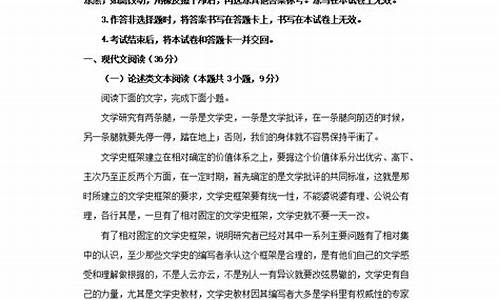您现在的位置是: 首页 > 分数线 分数线
英语高考语法点_英语高考语法点梳理
tamoadmin 2024-05-22 人已围观
简介《高中英语语法-倒装用法归纳之一》由英语我整理,更多请访问:。本内容整理时间为05月12日,如有任何问题请联系我们。 倒装用法归纳之一 倒装是中学阶段的一个重要的语法知识点,也是高考命题热点之一。下面笔者就来谈谈它的用法。 一、完全倒装 完全倒装是把谓语动词完全置于主语前,其中主语必须是名词,若为代词则不倒装,这种结构中谓语部分无助动词( be ,do ,have )和情态动词,但可以有连

《高中英语语法-倒装用法归纳之一》由英语我整理,更多请访问:。本内容整理时间为05月12日,如有任何问题请联系我们。
倒装用法归纳之一
倒装是中学阶段的一个重要的语法知识点,也是高考命题热点之一。下面笔者就来谈谈它的用法。
一、完全倒装
完全倒装是把谓语动词完全置于主语前,其中主语必须是名词,若为代词则不倒装,这种结构中谓语部分无助动词( be ,do ,have )和情态动词,但可以有连系动词 be .须用完全倒装的情况有:
1. 当句首为副词 out ,in ,up ,down ,off ,here ,there 等,且主语为名词时,应用完全倒装。如:
In came the doctor. 医生进来了。
There goes the bell. 铃响了。
2. 当表示地点的介词短语位于句首,且主语为名词时,应用完全倒装。如:
On top of the hill stands a big pine tree.
山顶上耸立着一棵大松树。
Under the tree were some children.
树下有一些孩子。
3. 在 there be 结构中,there 为引导词,be 动词之后为句子的主语,属完全倒装,be 应与主语保持一致。除 be 以外,能与 there 连用的动词还有 seem ,exist ,happen ,appear ,live ,stand 等。如:
There were a lot of people in the park last Sunday.
上周日公园里有很多人。
Once there lived a king who was cruel to his people.
从前有一位对人民很残暴的国王。
4. 作表语的形容词、过去分词等较短,而主语相对比较长,为了保持句子平衡而将表语前置时,句子的主谓也应完全倒装。如:
Typical for China is the crosstalk show, in which two comedians entertain the audiences with words.
中国典型的艺术形式是相声,两名演员用言语来逗乐观众。
Gone are the days when we Chinese were looked down upon.
中国人民被歧视的日子已成为过去。
5. 某些表示祝愿的句子也可用完全倒装(或部分倒装)。如:
Long live the Chinese Communist Party of China!
中国***万岁!
May you succeed!
祝你成功!
二、部分倒装
部分倒装则是将助动词调到主语前,主语可以是名词也可以是代词。通常应使用部分倒装的情况有:
1. 当句首为否定或半否定词 never ,neither ,nor ,little ,seldom ,hardly ,scarcely ,in no way ,few , not ,no 等时,应用部分倒装。如:
Seldom does he spend his time playing cards.
他很少花时间去玩扑克。
Never have I heard of that place before.
我以前从未听说过那个地方。
2. only 修饰时间、地点、方式、原因等状语时,应用部分倒装。如:
Only in this way can we solve the problem.
只有这样,我们才能解决这个问题。
Only when you told me did I know her name.
直到你告诉我,我才知道她的名字。
注意:如果 only 修饰的不是状语,则句子不倒装。如:
Only Uncle Li knows how it happened.
只有李叔叔知道这件事是怎么发生的。
3. 表示对前者的陈述也适用后者时,肯定倒装用? so + 助动词/情态动词 + 后者?,否定倒装用? neither / nor + 助动词 / 情态动词 + 后者?。如:
He can speak English,so can I.
他会说英语,我也会。
If she doesn?t go there tomorrow,neither / nor will I.
如果她明天不去那儿,我也不去。
注意? so + 助动词 / 情态动词 + 主语?与? so + 主语 + 助动词 / 情态动词?的区别:
前者表示所说的主语和前面主语的情况一样,所谈到的是两个人或物,意为?也是这样?;后者所谈为同一人或物,说话者表示同意前者的观点,意为?的确如此?。如:
? Li Lei likes sports. 李雷喜欢运动。
? So he does and so do I. 他的确喜欢,我也是的。
4. so 及? so + 形容词 / 副词?置于句首时,应用部分倒装。如:
So frightened was he that he didn?t dare move.
他如此惊慌以至不敢动弹。
So quietly did she speak that we could not hear a word.
她说话声音这么低,以至我们一个字也没听到。
5. such 及? such + 形容词 + 名词?置于句首时,应用部分倒装。如:
Such is Zhong Cheng, a kind and helpful student.
这就是仲成,一个善良、乐于助人的学生。
Such good players are they that they often win.
他们是好队员,所以他们经常获胜。
6. 由 not only but also 引起的并列句,若将 not only 置于句首时,该分句应部分倒装, but also 引导的分句不倒装。而由 neither nor 引起的并列句,两个分句都倒装。如:
Not only did he give me some advice,but also he lent me some money.
他不但给我提了建议,而且还借给了我一些钱。
Neither does he watch TV,nor does he see films in the evening.
他晚上既不看电视也不看**。
7. 由连接词 No sooner than ,Scarcely when ,Hardly when 引起的主从复合句,主句应倒装,从句不倒装。如:
No sooner had he gone to bed than he fell asleep.
他一上床就睡着了。
Hardly had I got into the classroom when it began to rain.
我刚一进教室天就下起雨来。
8. not until 引起的时间状语置于句首时,句子的主谓应部分倒装。由 not until 引导的时间状语从句位于句首时,主句应部分倒装,从句语序不变。如:
Not until 1998 did he return to his hometown.
直到 1998 年他才回到家乡。
Not until Father came back did we begin to have supper last night.
昨晚直到父亲回来,我们才开始吃晚饭。
注意:当 not until 引导的状语或状语从句用于强调句型时,句子的主语不倒装。如将上两句改为强调句应为:
It was not until 1998 that he returned to his hometown.
It was not until Father came back that we began to have supper last night.
9. 省略 if 的虚拟条件句,可将 were ,had ,should 提至主语前。如:
Were I you,I would go there tomorrow.
要是我是你,我明天就会去那儿。
Had you been there,you would have met the manager himself.
要是你去了那儿,你就会见到经理本人了。
10. 表示时间频率且有肯定意义的词语 often ,every day ,now and again 等置于句首用来强调时,应用部分倒装。如:
Often does he send me e-mails to greet me.
他经常给我发电子信件问候我。
三、主谓不倒装的倒装句
1. as / though 引起让步状语从句,可将表语或状语置于句首,但主谓不颠倒顺序。如:
Tired as / though he is,he is still working. 《高中英语语法-倒装用法归纳之一》由英语我整理,更多请访问:一:非谓语:(1)形式有三种:动词不定式,动名词,分词。
动词不定式相当于名词,形容词,副词,可做主语,宾语,宾补,表语,定语,状语(即谓语以外的所有句子成分);动名词相当于名词,可做主语,宾语,表语,定语;分词相当于形容词,副词,可做宾补,表语,定语,状语;
(2)语态:若逻辑主语是动作的发出者,则用主动;若逻辑主语是动作的承受者,则用被动;若逻辑主语既不是动作的发出者也不是承受者,则:动词不定式用独立结构
动名词用复合结构
分词用独立主格结构
举例:A)动词不定式作主语:To finish my homework is my job.
宾语:I want to have a wise brain.
宾补:I want you to attend the meeting.
表语:You job is to earn money.
定语:He is to go to college.
状语:I get up early in order to recite the poem.
独立结构:To tell you the turth,I am a student.
注意:1:有些宾语的不定式有自己的补语,则应用it做形式宾语,而将真正的宾语后置,如:I think it important to study English well.
2:不定式一般不做介词的宾语,除在极少数介词后才行(如but,except),此时动词不定式可带to也可不带to,如:He seldom comes except (to)see my daughter.
B)动名词做主语:Reading is my habbit.
宾语:The old need looking after.
表语:I am reading.
定语:He was looking the hanging picture.
复合结构:Alan's illness accounts for his coming late for school.
注意:1:一些特殊句式,如It is no good(no use,fun,a wast of time)+doing
There is no.....+doing
2:动名词复合结构的一般规则是:逻辑主语是有生命的名词,作主语时,须用名词的所有格形式或形容词性物主代词;作宾语时,可用普通格或人称代词宾格。
C):分词作宾补:I mind your somking.
表语:The news is encouraging./The glass is broken.
定语:This is a reading room./The book written by him is interesting.
状语:Seen from the top of the mountain,the city is beautiful.
二:虚拟语气:
A):在条件从句中:
1):表示与事实相反 条件从句的谓语形式 主句的谓语形式
表示现在情况 if+主语+did should/would/could/might+do
表示过去情况 if+主语+had done should/would/could/might+have done
表示将来情况 if+主语+were to do should/would/could/might+do
if+主语+should do
if+主语+did
2):在省略if的条件从句中,从句有were,should,had时,可省略if,而把它们置于主语之前,如:
If I had had time, I would have made an appointment with you.变成Had I have time,I would have an appointment with you.
3):介词without引导的短语可用来代替if引导的虚拟条件从句,如:If there were no water,fish couldn't live.
可由Without water,fish couldn't live.来代替。
4):错综时间的条件从句,主句和从句的谓语动词要依照设定的时间而定。如:If you had studied hard at that time,you would do it easily now.
B);在宾语从句中
1):在一些表示“坚持,命令,要求,建议”的词(如insist,command,order,require,request,desire,demand,advise,suggest,propose)后面接的宾语从句用should do,should可省略。
2):wish引导的宾语从句有三种情况:
1,现在:用过去式;
2,过去:用过去完成时;
3,将来:用(would/could)+do。
3):在would rather引导的宾语从句中
当从句表示现在或将来的时间时,谓语动词用一般过去式;表示过去的时间时,谓语动词要用过去完成时。
C):在主语从句中
在句型“It is strange/necessary/natural/important/right/pity/sorry+that......”中,that后面从句的谓语动词用:should do。注意:有些过去分词可以当形容词使用,在主语从句中要用虚拟语气,如It is ordered/commanded/required/advised/suggested that we/you /he/ she(should)+do .
D):在表语从句中
主句的主语常是表示说话人的命令,要求,建议,愿望等的名词(如order,command,requirement,demand,advise,suggestion,wish,desire),表语从句的谓语动词用(should)+do.如:Our suggestion is that you (should)be there on time.
E):在同位语从句中
同位语从句的先行词常是说话人愿望,建议,要求,命令等的名词。如:We put up with our suggestion that you (should) be there on time.
F):在as if从句中
1):在as if从句中,常用虚拟语气,即表示与现在事实相反,用过去式;与过去事实相反用过去完成式。
2):当不接虚拟语气时,表示可能或真实的情形。如:It looks as if it is going to rain.
3):虚拟语气中的几个特例
1,if only 意为:若是……那该多好啊;真希望……;只要,只要……就好了,如:If only I could fly.
2,It's(high)time that……that从句要用虚拟语气:谓语动词用过去式或should do 。如:It's high time that we should go.
3,一些短语,如:but for(要不是),without,otherwise(否则),in that case(如果那样的话),表示含蓄的条件,这是主句要用虚拟语气。如:Without your help,I couldn't finish it on time.
三:倒装句
A):完全倒装:谓语的全部放在主句之前。(此结构常只用于一般现在时和一般过去时)
1)用在there be结构中,此外,在此结构中可用来代替be的动词有exist,seem,happen,appear,hve,rise,stand等。如:There are many students in my classroom.
2):表示时间、地点和动作转移的副词如now,then,here,there,up,down,in,away,out等置于句首时,为使生动地描述情景而采用倒装语序,谓语动词常用动语come,go,be,lie,run,rush等。如:Now comes your turn.
注意:当代词作主语时,主谓语序不变。如:Here it is.
3):当句首为表示地点的介词词组时,也常引起全部倒装。如:From the valley came a frightening sound.
4):为平衡句子结构,或使上下文衔接紧密,表语置于句首时,倒装结构为:表语+连系动词+主语
1,“形容词+连系动词+主语”如:Present at the meeting were my sister.
2,“过去分词+连系动词+主语”如:Gone are the days when we were poor.
3,“介词短语+be+主语”如:Among the goods are flowers and toys.
B):部分倒装:只把系动词、助动词、情态动词放在主句之前。
1):在疑问句中,如:Can you speak English?
2):用于“never,hardly,seldom,scarely,rarely,barely,little,often,at no time(决不),by no means(绝不),under no circumstances(在任何一种情况下都不),in no case(绝不),in no way(决不)”等含有豆丁意义的副词或连词在句首的句型中。如:Little did he care about his own safety.
3):用于“no sooner....than....,hardly.....when.....,和not until....,not only....but alsol....,neither....nor”的句型中,主句部分用部分倒装。如:Not until the children fell asleep did the mother leave the room.
4):"only+状语"置于句首是要进行部分倒装,状语包括副词,介词短语和状语从句。如:Only then did he realise the importance of English.
5):用于“so/such....that"句型,so/such置于句首时,要部分倒装。如:So fast did he run that I couldn't catch up with him.
6):用于“形容词(或名词,动词)+as (though)"引导的让步状语从句中。如:
Try as you would, you might fail again.
Beautiful as she is,she isn't clever.
Child as he is ,he knows a lot.
7):用于省略if 的条件状语从句中,把助动词were,had,should提到主语前面。
下一篇:吾品高考设计怎么样,吾品高考设计









